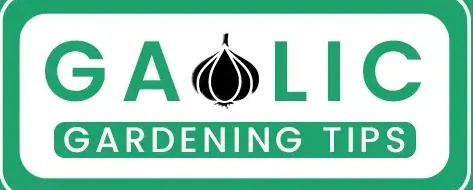Can Dogs Have Garlic? Why Garlic Isn’t Safe for your Dog?
Has your dog eaten some garlic?
If yes, it may be a very frightening situation.
Especially when your dog is showing signs of being sick from it.
Because all forms of garlic are potentially toxic to dogs. Therefore it is crucial to take some necessary steps, if you find that your dog has consumed enough garlic. The first step is to take the garlic away from your dog and assess the situation.
In this article, we will walk through Can dogs have garlic? What are signs of garlic poisoning and What should you do. Additionally, we will also discuss available treatment options so you can take proactive steps to protect your canine companion.
Is garlic bad for your Puppy?
According to Dr. Shalsee Vigeant, a medical director at the veterinary emergency group hospital VEG, “Garlic is toxic to dogs. Toxicity level depends upon the quantity consumed. Small amounts may not cause immediate harm, but larger quantities can lead to serious health issues.
Garlic belongs to the Allium sativum family, which is the same family as onions, chives, leeks, and shallots. It is not only used in kitchens to enhance the flavour of foods, but also used for curing various ailments in humans and animals alike.
Garlic is a nutritional powerhouse; it contains a variety of essential nutrients like inulin, amino acids, sulphur, zinc, potassium, and phosphorus. Additionally, it also contains vitamins A, C, calcium, magnesium, manganese, and B-complex vitamins.
These all nutrients clean our body. But there are two special ingredients found in cloves: allicin and ajoene. These ingredients enhance the use of the body further, which is why garlic is often considered a natural medicine. Ancient Egyptians often used Allium sativum to enslaved people to boost their immunity; Chinese doctors and Native Americans frequently used it to treat different diseases ranging from scurvy to earache.
Dogs do not have allergies to these plants, but they contain N-propyl disulphides and thiosulfates. When they are metabolised by the pet’s body, it causes damage to their red blood cells. Therefore normally garlic is not good for pets.
Which Form of Garlic Is Dangerous?
Whether it is raw or cooked garlic, it is potentially dangerous to dogs. Garlic and related plants like onions are toxic to dogs, because they can cause anemia and signs of toxicity when consumed in high enough amounts. It can even kill them if they do not get medical treatment at the right time. Almost all the forms of garlic are potentially toxic to dogs. These forms of garlic include:
- Raw garlic
- Cooked garlic
- Garlic powder
- Garlic paste
- Pickled garlic
- Liquid garlic
- Garlic oil
- Any food with garlic as an ingredient
Symptoms of Garlic Poisoning in Dogs
If you suspect your dog has ingested garlic or a garlic-containing product. It would be a great idea to observe how your dog is acting after eating garlic. This could show you some signs as to if your dog is experiencing garlic poisoning or not.

This can have serious health consequences for dogs, even in small amounts. Here’s a breakdown of the effects:
1. Gastrointestinal Upset
Garlic is a gastrointestinal irritant, and it can cause vomiting and diarrhoea in dogs. If ingested in high doses, it can have toxic effects on red blood cells, it may lead to:
- Vomiting
- Diarrhea
- Loss of appetite
2. Anemia
It can damage the red blood cells that carry oxygen to tissues in a dog’s body, which can cause health problems. This can result in:
- Pale gums
- Lethargy
- Weakness
- Difficulty breathing
- Collapse
3. Organ Damage
In severe cases, garlic toxicity can affect other organs, such as the liver and kidneys. This can cause:
- Jaundice (yellowing of the skin and eyes)
- Bloody urine
- Elevated heart rate
It’s important to note that the severity level of symptoms depends on how much quantity is consumed. The more garlic a dog eats, the worse the symptoms will be. Similarly, smaller dogs are typically at more risk of garlic poisoning than larger dogs.
It may take up to several days for dogs to show signs of poisoning. Therefore, contact your vet immediately, even if your dog seems fine. Any information regarding your dog’s behaviour can be helpful to the vet.
What Should You Do If Your Dog Eats Garlic?
Has your dog taken garlic? It’s important to act quickly, as you can safely save your dog’s life. If your dog consumes small amounts of garlic (less than 1 clove) or consumes a piece of garlic-cooked chicken, you shouldn’t expect any symptoms and no need to be worried. But for enough garlic, it would be best practice to consult a veterinary professional.
Seven basic steps are discussed below, which can help you in case of any emergency.
1. Keep The Garlic Out of Your Dog’s Reach
To prevent your dog from eating any more garlic, you should remove the garlic from your dog’s reach. This could prevent your dog from eating more and save him from severe toxic reactions. This includes all forms of garlic and any food that has garlic in it.
2. Don’t Panic
After observing poisoning symptoms in your dogs, you might panic, but try to make yourself relax and stay calm. Take a deep breath, collect your thoughts, and evaluate the situation. It might feel like you are wasting time, but staying calm will definitely help you to respond better.
3. Have An Idea About How Much Your Dog Weighs
In these situations, According to National wide Pet health zone, it’s really important to have a rough idea about how much your dog weighs. Because the toxicity level depends on both garlic quantity and the dog’s weight.
For example, garlic is much more toxic to a 6-pound dog than to a 100-pound dog. However, you should still follow these steps even if you do not know the weight of your dog.
4. Assess the Situation
Next step: assess the situation. It is also important to know what type of garlic your dog has consumed and how much. Knowing all these things will be useful to the vet. If your pet eats a large quantity of garlic, do not wait for symptoms. Sometimes symptoms of garlic toxicity can be delayed for a few days and will require extensive and expensive treatment if not treated immediately.
5. Call Your Vet
Next, you should call your vet immediately. Having a vet on the phone will definitely allow you to make the next steps under a professional’s instruction. This is particularly important if you need to perform some steps, such as inducing vomiting, before taking your dog to the vet.
6. Follow Your Vet’s Instructions
When calling your vet, they may give you some specific instructions before making the trip to the vet. This is normally done when a dog needs induced vomiting. If your vet does this, follow all instructions precisely. Please note that you should never attempt to induce a dog’s vomiting without a vet’s instruction.
7. Take Your Dog to the Vet
After following all instructions from your vet, please do not keep your dog at home. You should bring your dog to the vet clinic immediately. Even after following home remedies, veterinary evaluation is often necessary to ensure complete recovery.
Can dogs have garlic bread?
No, you must keep your dog away from garlic bread. Garlic is harmful for pets, no matter which form of garlic is being eaten. Even small quantities can affect your dog’s health. The reason why garlic bread is dangerous for your furry friend is because it contains other ingredients such as butter, oil and salt, which are unhealthy for your dogs.
Conclusion
Garlic is a common kitchen ingredient that is used in every dish around the world. It may offer numerous health benefits for humans but can be a serious threat to our canine companions.
Ingesting garlic in any form can lead your dog to a range of serious health issues, including gastrointestinal upset, anemia, and organ damage. If you suspect your dog has consumed enough garlic, it is important to act quickly. To assess the situation, remove the garlic away from your puppy’s reach, stay calm, and contact your veterinarian immediately. Follow vet instructions carefully, which may involve inducing vomiting or bringing your dog to the clinic. By following these important steps, you can help your furry friend to recover quickly and avoid severe complications.
For more details about poisoning foods for your pets and gardening tips, visit our blog regularly.
FAQs
Q1. Is Garlic Salt Safe for Dogs??
No, dogs should not have garlic salt. Garlic and garlic salt, both are toxic to dogs. Even small amounts can affect your doggie and can lead to serious health problems.






